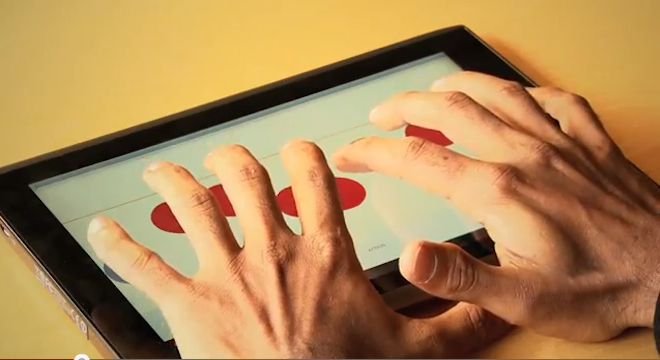Technological advances like the touchscreen and the tablet computer aren’t exactly designed nominally with visually impaired users in mind.
But thanks to one undergrad’s brilliantly simple mobile application, touchscreen devices including the iPad, Android tablets and mobile phones can instantly become more accessible to visually impaired users, and can even replace the current next-best option: expensive, clunky, tactile-feedback Braille keyboards.
New Mexico State University senior Adam Duran won the top award at Stanford University’s Army High-Performance Computing Research Center’s 2011 summer contest for developing a touchscreen braille writer. (H/t: New Scientist)
As a Stanford release on the news explains:
There are devices that help the blind write Braille, to send email and so forth, but they are essentially specialized laptops that cost, in some cases, $6,000 or more. All for a device of limited functionality, beyond typing Braille, of course.
“Your standard tablet has more capability at a tenth the price,” said Duran.
“So, we put two and two together. We developed a tablet Braille writer,” said [Duran’s mentor, Stanford doctoral candidate Sohan] Dharmaraja, “A touchscreen for people who can’t see.”
The application works by automatically detecting where a user puts their fingers on the screen. Then, it generates a standard eight-key braille keyboard below the fingerpads. It also provides a slideable, audio-based menu for determining where to store the typed text.
Check out the app in action in the following video from Stanford:
Little wonder Stanford notes the development “stands to revolutionize how the blind negotiate an unseen world by replacing devices costing up to 10 times more.”









